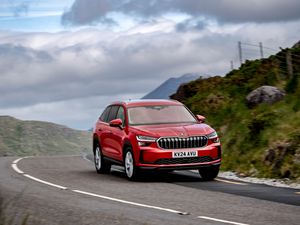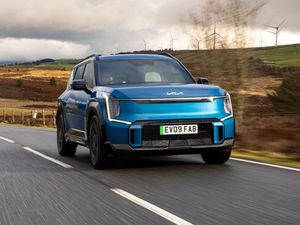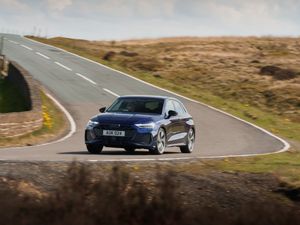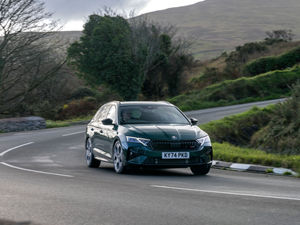UK Drive: Does a plug-in hybrid powertrain suit the Land Rover Discovery Sport?
Jon Reay finds out if an electrified powertrain suits the nature of the Discovery Sport
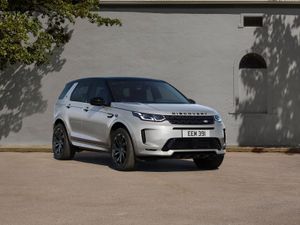
What is it?

>
These days there’s barely a car manufacturer around that doesn’t offer some form of electrified power for its cars – and Land Rover is no exception.
We’re not quite at the point of seeing fully-electric Defenders, Range Rovers and Discoveries on the roads, but the firm has been churning out plug-in-hybrid versions of most of its range for a few years now.
And so, here we have the Discovery Sport P300e – a PHEV version of Land Rover’s compact SUV. But does it make more sense than a standard petrol or diesel version?
What’s new?

>
The Discovery Sport first arrived back in 2014, and from the outside you’d be forgiven for thinking not much has changed since then. That’s not necessarily a bad thing of course: the Sport was a handsome car then and it still is now, helped by a few design nips and tucks along the way.
Officially this is the second generation model, launched in 2019, but think of it more like a very comprehensive facelift – including a new platform – and you’d be along the right lines.
With the P300e itself, there’s not much to differentiate it from any other Discovery Sport, except of course an extra flap on the rear wing to hide its charge port. As a result of slotting the battery under the boot floor, the P300e misses out on the Sport’s standard third-row seats too – making this a strict five-seater.
What’s under the bonnet?

>
In typical PHEV fashion, you get a downsized engine paired with a small battery and electric motor. In the case of the Discovery Sport, it’s a 197bhp three-cylinder 1.5-litre petrol driving the front wheels, and a 107bhp electric motor driving the rears.
To power said electric motor, Land Rover has squeezed in a 15kWh battery, giving a range of (in theory) 34 miles on electricity alone.
Curiously for a Land Rover, these two motors effectively work independently of one another – there’s no physical link between the two, unlike in some four-wheel-drive PHEVs. There are a few benefits to this kind of setup of course – not least efficiency – but it’s worth remembering that when the Sport is operating in electric mode, it’s effectively rear-wheel-drive only.
Impressively, said battery can also be ‘rapid’ charged using a CCS-equipped plug – meaning that, if you so desire, you could stop at a motorway services and top up to 80 per cent in around 30 minutes.
On a Type 2 plug, meanwhile, it’ll charge at 7kW rather than the PHEV norm of 3.7kW – meaning you’ll be able to add far more delicious free mileage while plugged in at Tesco than you would in an equivalent Volvo XC60.
What’s it like to drive?

>
If you’re wincing at the thought of a car as large and expensive as this being propelled by a three-cylinder engine, fear not – the turbocharged 1.5 actually fits the Discovery Sport rather well. Most of the time it goes about its business without too much aural intrusion, and even under load it sounds quite pleasing and throaty.
It helps, of course, that it’s being given an extra bit of shove from the electric motor – which in itself is powerful enough to get the Discovery (with a gentle right foot) up to 84mph. Generally speaking, the switch between petrol and electric is seamless too – even at motorway speeds.
As with most PHEVs though, there are a few operational quirks to get your head around – the biggest being your ultimate lack of control over whether you’re using petrol or electricity. For example, on multiple occasions we set off with a full battery only to find the Discovery Sport’s petrol engine running regardless, and the dash display stating ‘EV Mode Unavailable’. The culprit, as far as we could work out, was having the climate control switched on.
Not the end of the world, but frustrating if you’re hoping to regularly use the Discovery Sport on electric-only mode for short journeys like school runs and shopping trips.
How does it look?

>
As we’ve mentioned, the Discovery Sport is wearing its years well – and certainly better than its bloated bigger brother, the full-fat Discovery. The neater headlights of the new model give the front end a more aggressive look than previously, but on the whole it’s a similar visual to before. Think evolution, not revolution.
Opt for the R-Dynamic trim and you’ll get a racy(ish) bodykit with body-coloured plastic, and there are plenty of option packs to make various styling tweaks too – including a black or grey contrasting roof, and a smorgasbord of alloy wheel choices in either silver or gloss black.
What’s it like inside?

>
Range Rover this may not be, but there’s a definite whiff of premium within the cabin of the Discovery Sport – but with just enough hard-wearing materials to keep things practical. As standard (in the P300e at least) you get leather seats and steering wheel, or the option of either of them in a suede-effect cloth instead.
Everything feels sturdy and well screwed together, with reassuringly chunky door cards and extremely-well padded (perhaps too much so) seats.
There’s also, it must be said, acres of room inside the Discovery Sport. Rear seat passengers get tremendous amounts of leg room – at least in our car with its optional sliding seats – and the boot is cavernous no matter how you arrange things.
For this reason alone, we’d be tempted to take the Discovery Sport over the far more petite Range Rover Evoque.
What’s the spec like?

>
You’ll find all the usual Jaguar Land Rover infotainment systems here – including the new 10-inch Pivi Pro screen in the centre of the dash, standard on all P300e models – and the option of digital dials. Thankfully this all works rather well, too.
Of course, there’s also plenty of scope for options – two different choices of upgraded Meridian speaker systems, a camera-based rear-view mirror, adjustable ambient cabin lighting and so on.
Surprisingly quite a lot is bundled in as standard, mind – including a ‘3D’-effect surround camera, heated front seats and of course Apple CarPlay and Android Auto (we hope you’re listening, BMW).
Verdict
If you’re after a plug-in-hybrid SUV, the Discovery Sport makes a pretty decent case for itself. It’s pleasant to drive, surprisingly quick, and there’s no faulting the amount of space inside.
Much like most PHEVs, it can sometimes feel like an awkward bridge between the worlds of internal combustion engines and electricity – not as simple around town as a full EV, and not as efficient on a long journey as a conventional diesel.
However, if you’ve decided a PHEV is the right fit for your mileage and lifestyle, the Discovery Sport is definitely worth a look. Niggles aside, it’s one of the better thought-out plug-in-hybrids on sale, and we’d have no issues recommending one over a diesel model – despite the apparent price premium.

